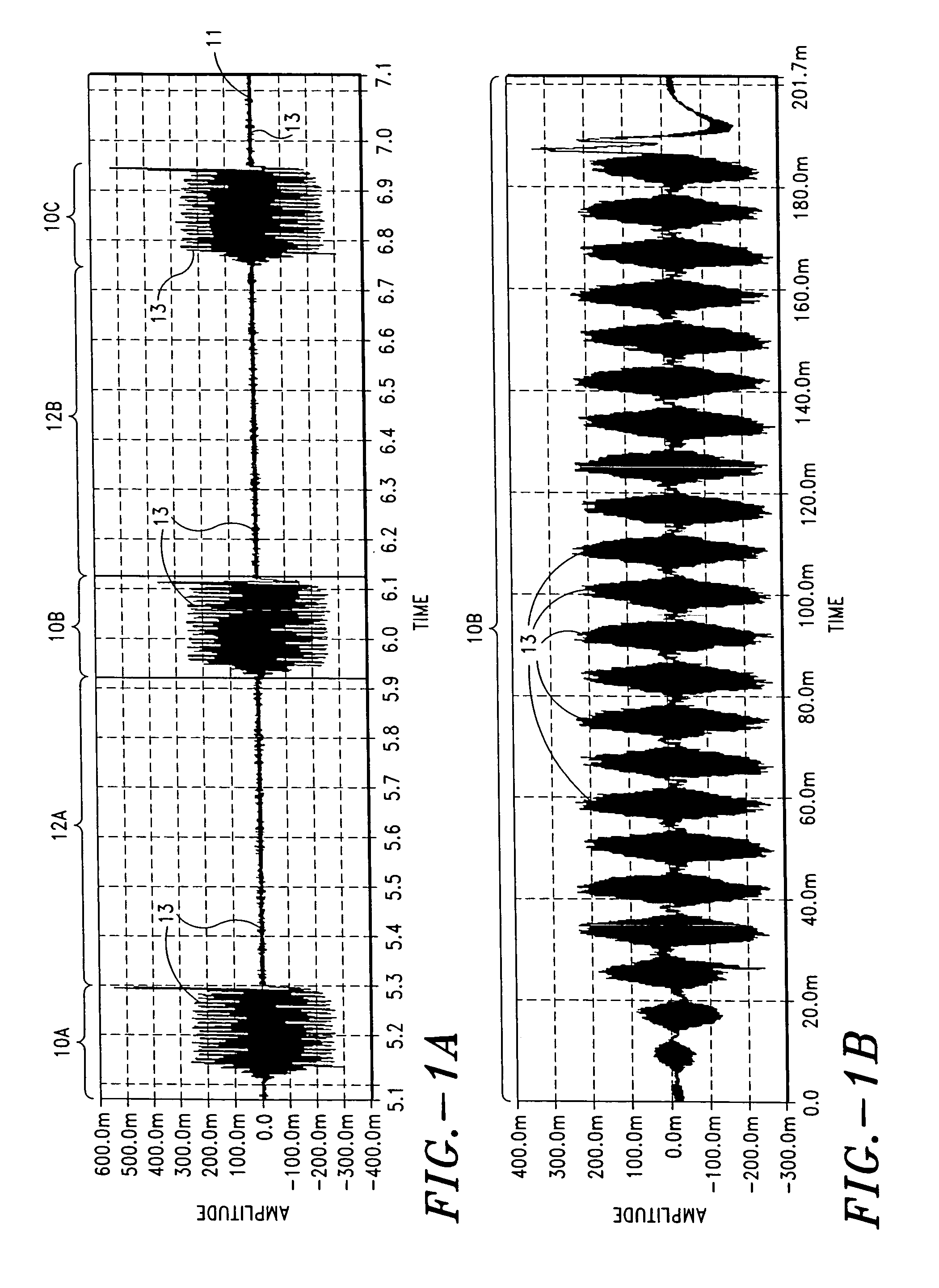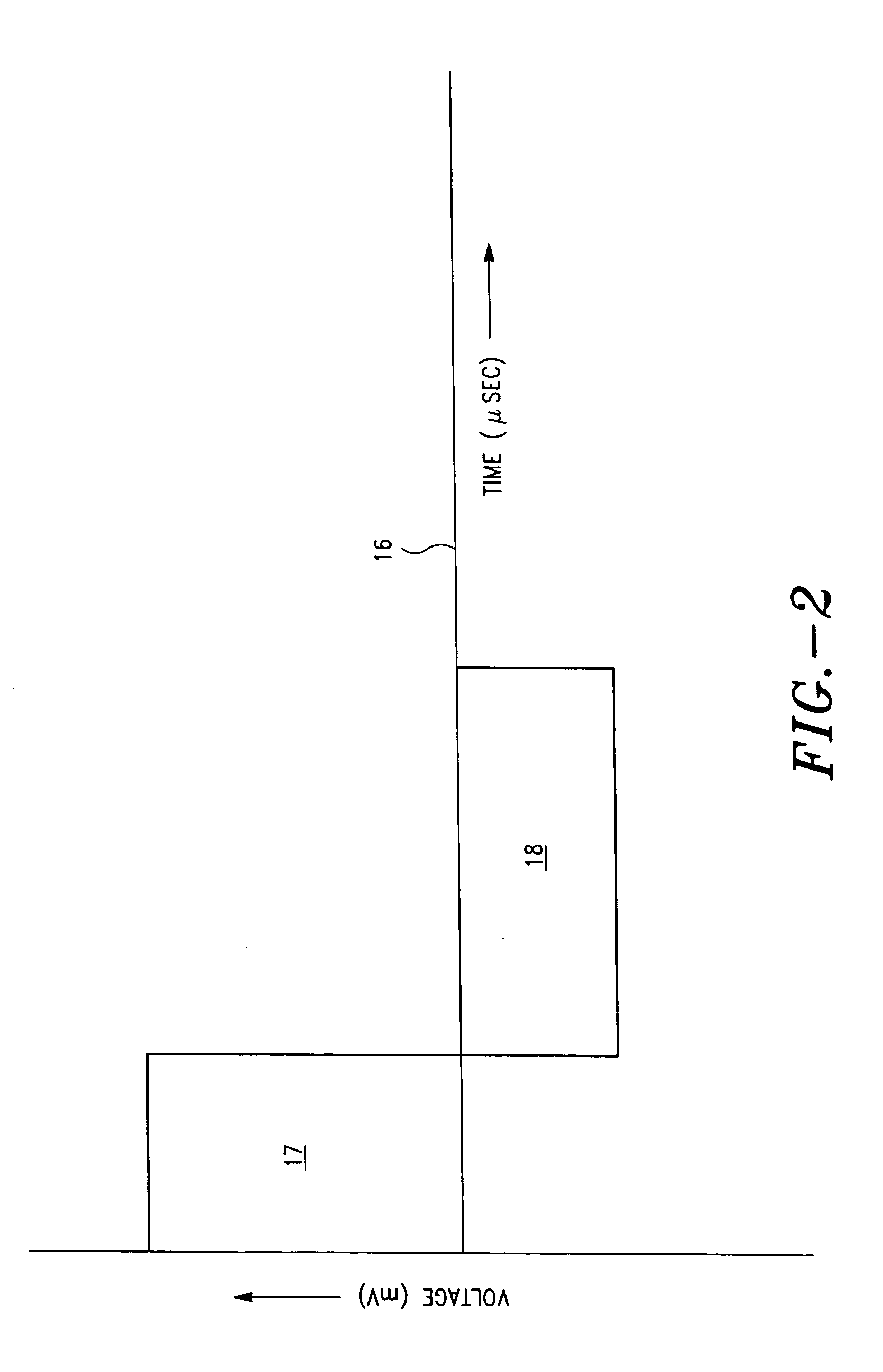Method and system to control respiration by means of confounding neuro-electrical signals
a neuro-electrical signal and confounding technology, applied in the field of medical methods and systems for monitoring and controlling respiration, can solve the problems of affecting asthma patients, causing a complete block of signals through a target nerve, and generating and transmitting control signals that are typically “device determinative” and other problems, to achieve the effect of being readily employed
- Summary
- Abstract
- Description
- Claims
- Application Information
AI Technical Summary
Benefits of technology
Problems solved by technology
Method used
Image
Examples
example 1
[0220] A juvenile swine having a weight of 82 lbs was exposed to nebulized methacholine that was dissolved in saline. Ventilation parameters, arterial oxygen saturation and exhaled carbon dioxide were monitored at various concentrations of methacholine.
[0221] The vagus nerve of the swine was exposed in the neck. As reflected in Table I, two signals were transmitted to the animal. Signal 1 comprised a sinusoidal signal having an amplitude of ±800 mV. Signal 2 comprised a confounding neuro-electrical signal having a plurality of simulated action potential signals. Each simulated action potential signal had a 200 μsec, 800 mV positive voltage region and a 400 μsec, −400 mV negative voltage region.
TABLE IPositive AmplitudeNegative AmplitudeRegionRegionSignalAmplitudeTimeAmplitudeTimeFrequency#1800 mV−800 mV 500 Hz#2800 mV200 μsec−400 mV400 μsec1666 Hz
[0222] The animal was administered four different doses of methacholine plus saline; allowed to recover for approximately 30 minutes; t...
example 2
[0227] A juvenile swine weighing approximately 70 lbs was prepared for surgery and then challenged with nebulized solutions of saline having increasing concentrations of methacholine. The challenges lasted three minutes with a seven minute rest period between challenges.
[0228] The swine went into respiratory arrest after 1:20 minutes when a dose of 2 mg / ml of methacholine was administered. After manual ventilation, the swine recovered and began spontaneous breathing. This dose was administered repeatedly while the effect of signal amplitude was investigated.
[0229] In the next phase of the study, electrodes were inserted into each vagus nerve and four confounding neuro-electrical signals were transmitted to the swine. Signal #1 comprised a confounding neuro-electrical signal having a plurality of simulated action potential signals having a 200 μsec, 1500 mV positive voltage region and a 400 μsec, −750 mV negative voltage region. Signal #2 comprised a confounding neuro-electrical si...
example 3
[0234] A juvenile swine weighing 44 lbs. was exposed to nebulized methacholine that was dissolved in saline. The dose of methacholine was titrated to a level which induced respiratory arrest in approximately 1 minute.
[0235] The animal was manually ventilated and allowed to recover. After the animal recovered, the same dose of methacholine was administered with a confounding neuro-electrical signal. As reflected in Table V, two different confounding neuro-electrical signals were transmitted to the animal. Signal #1 comprised a confounding neuro-electrical signal having a plurality of simulated action potential signals having a positive amplitude of approximately 1500 mV for a duration of 300 μsec and a negative amplitude of approximately −750 mV for a duration of 600 μsec. Signal #2 comprised a confounding neuro-electrical signal having a plurality of simulated action potential signals having a positive amplitude of approximately 1200 mV for a duration of 300 μsec and a negative amp...
PUM
 Login to View More
Login to View More Abstract
Description
Claims
Application Information
 Login to View More
Login to View More - R&D
- Intellectual Property
- Life Sciences
- Materials
- Tech Scout
- Unparalleled Data Quality
- Higher Quality Content
- 60% Fewer Hallucinations
Browse by: Latest US Patents, China's latest patents, Technical Efficacy Thesaurus, Application Domain, Technology Topic, Popular Technical Reports.
© 2025 PatSnap. All rights reserved.Legal|Privacy policy|Modern Slavery Act Transparency Statement|Sitemap|About US| Contact US: help@patsnap.com



